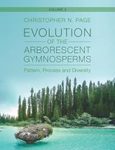![A Late Cretaceous (Cenomanian-Turonian) South Polar Palynoflora from the Chatham Islands, New Zealand A Late Cretaceous (Cenomanian-Turonian) South Polar Palynoflora from the Chatham Islands, New Zealand]()
Click to have a closer look
About this book
Related titles
About this book
Forty palynofloral assemblages were obtained from the Waihere Bay and Tupuangi Beach outcrop successions of Pitt Island, Chatham Islands, New Zealand. All assemblages are from the Ngaterian-Mangaotanean (Cenomanian-Turonian) Tupuangi Formation, except one which is from the overlying Kahuitara Tuff. These strata likely represent the highest southern palaeolatitude (about 75-80 degrees S) locality of the mid-Cretaceous studied to date, an interval of extreme global greenhouse conditions. Samples yielded well preserved and moderately diverse plant miospore and megaspore assemblages. This study includes the taxonomic treatment of 37 spore taxa, 37 pollen taxa, two taxa of probable algal affinity and two taxa of unknown affinity (incertae sedis). These taxa include three newly described conifer species, Araucariacites mildenhallii sp. nov., Balmeiopsis disca sp. nov. and Podocarpidites microradiatus sp. nov., one emendation of a previously described species, Trichotomosulcites hemisphaerius, and two new binominal combinations, Retitriletes pseudoreticulatus and R. saturnalis. Quantitative data were collected for all taxa, and a statistical approach was employed to test the conspecificity of variant forms of common Cretaceous taxa. A pitted/foveolate sculpture was commonly observed across various disparate taxa; this was attributed to sample-specific exinal degradation, rather than taxonomic variation.
The Tupuangi palynoflora differs from coeval high palaeolatitude assemblages of Gondwana in having a high diversity and extremely high abundance of conifer pollen. The quantitative data reveal intermittent, low diversity 'fern spikes', but conifer pollen abundance was greater than fern spore abundance in almost all samples. The abundance of probable freshwater algae and absence of marine microplankton throughout most of the succession supports a predominantly terrestrial setting for the Tupuangi Formation. Lycopod and non-vascular plant spores are moderately diverse, but represent minor components in all examined assemblages. Angiosperm pollen occur in low relative abundance in all the studied samples, and show a lower diversity compared to coeval lower palaeolatitude localities. The most abundant conifer groups were (in order of decreasing abundance): Cupressaceae, Podocarpaceae and Araucariaceae. The Tupuangi palynoflora suggests a Cupressaceae-dominated subprovince at the highest palaeolatitudes during the early Late Cretaceous.
Representing an intermediate province between the assemblages of the Antarctic Peninsula and New Zealand/Australia, the Pitt Island palynoflora provides an important foundation for future mid-Cretaceous biostratigraphic and phytogeographic correlations of southern Gondwana.
Customer Reviews





























